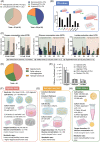Two- and three-dimensional in vitro nucleus pulposus cultures: An in silico analysis of local nutrient microenvironments
- PMID: 36203867
- PMCID: PMC9520769
- DOI: 10.1002/jsp2.1222
Two- and three-dimensional in vitro nucleus pulposus cultures: An in silico analysis of local nutrient microenvironments
Abstract
Background: It is well established that the unique biochemical microenvironment of the intervertebral disc plays a predominant role in cell viability and biosynthesis. However, unless the effect of microenvironmental conditions is primary to a study objective, in vitro culture parameters that are critical for reproducibility are both varied and not routinely reported.
Aims: This work aims to investigate the local microenvironments of commonly used culture configurations, highlighting physiological relevance, potential discrepancies, and elucidating possible heterogeneity across the research field.
Materials and methods: This work uses nutrient-transport in silico models to reflect on the effect of often underappreciated parameters, such as culture geometry and diffusional distance (vessel, media volume, construct size), seeding density, and external boundary conditions on the local microenvironment of two-dimensional (2D) and three-dimensional (3D) in vitro culture systems.
Results: We elucidate important discrepancies between the external boundary conditions such as the incubator level or media concentrations and the actual local cellular concentrations. Oxygen concentration and cell seeding density were found to be highly influential parameters and require utmost consideration when utilizing 3D culture systems.
Discussion: This work highlights that large variations in the local nutrient microenvironment can easily be established without consideration of several key parameters. Without careful deliberation of the microenvironment within each specific and unique system, there is the potential to confound in vitro results leading to heterogeneous results across the research field in terms of biosynthesis and matrix composition.
Conclusion: Overall, this calls for a greater appreciation of key parameters when designing in vitro experiments. Better harmony and standardization of physiologically relevant local microenvironments are needed to push toward reproducibility and successful translation of findings across the research field.
Keywords: cell culture; glucose; in silico; microenvironment; oxygen; pH.
© 2022 The Authors. JOR Spine published by Wiley Periodicals LLC on behalf of Orthopaedic Research Society.
Conflict of interest statement
The authors declare no conflict of interest.
Figures








References
LinkOut - more resources
Full Text Sources

